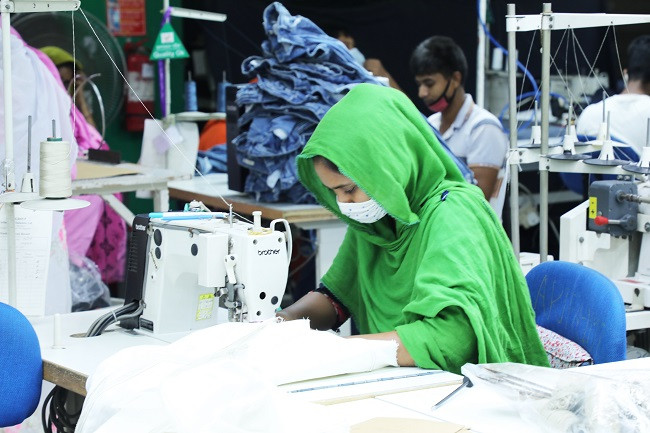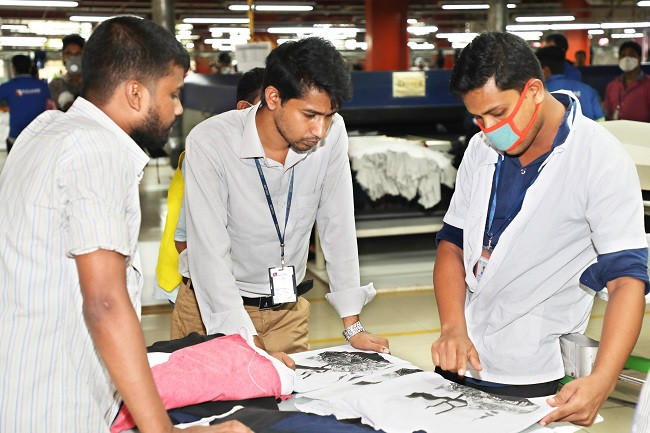Exploring opportunities for Bangladesh’s RMG sector in the US market
The United States remains the largest destination for ready-made garment (RMG) exports from Bangladesh, yet there are numerous opportunities for further growth and stronger trade relations. With Bangladesh’s apparel industry facing various challenges, including the suspension of the Generalized System of Preferences (GSP) by the US in 2013, there is significant potential to improve trade relations and explore new avenues.

Restoring the GSP facility and duty-free access
One of the most critical steps Bangladesh can take is to request the reinstatement of the GSP facility, which was suspended by the US in 2013 due to concerns over labor rights and factory safety issues. Restoring the GSP would provide crucial tariff relief for Bangladeshi exports. In addition to this, Bangladesh could also advocate for duty-free access to the US market for its RMG products.
Reducing or eliminating current tariffs on Bangladeshi goods would significantly improve the country’s competitive standing in the US market. Such changes would increase Bangladesh’s influence, allowing its apparel exports to become more cost-effective and appealing to American retailers. This, in turn, would boost trade volumes and foster stronger business ties between the two countries.
Seeking technical assistance for industry modernization
The US could provide technical assistance to support the modernization and sustainability of Bangladesh’s RMG sector. This could include advanced technological support, training programs, and help in the automation of factories. By improving technology, adopting automation, and focusing on sustainable manufacturing practices, Bangladesh could not only enhance productivity but also meet the growing demand for eco-friendly products in the US.
Technical assistance could also extend to developing Bangladesh’s capacity for high-value products, such as sportswear, activewear, and eco-friendly apparel, helping the country move up the value chain and diversify its product offerings.
Encouraging business partnerships and investment
There is a strong case for encouraging the US to invest in Bangladesh’s RMG sector, particularly in areas such as infrastructure and sustainable manufacturing. The Bangladeshi government and industry leaders could reach out to US investors and companies to explore potential joint ventures and partnerships. These collaborations could focus on expanding production capabilities, adopting new technologies, and ensuring compliance with international standards.
Additionally, promoting business partnerships between investors from both countries could lead to increased investments and shared expansion plans. Such efforts would contribute to the long-term growth and stability of Bangladesh’s garment industry, allowing it to scale up operations and meet rising global demand.
Market diversification and brand promotion in the US
To further solidify its position in the US market, Bangladesh needs to focus on market diversification and brand promotion. The US regularly hosts retail events and textile fairs, which present an excellent opportunity for Bangladesh to showcase its products. By participating in these events, Bangladesh can create more visibility for the “Made in Bangladesh” brand, highlighting the country’s role as the second-largest RMG exporter globally.
Promoting Bangladesh’s progress in sustainable manufacturing and ethical sourcing practices could enhance the country’s image in the eyes of American consumers. Furthermore, expanding into high-value sectors such as sportswear, activewear, and eco-friendly clothing would allow Bangladesh to cater to the growing demand for specialized apparel products in the US market.
Strengthening sustainability and ethical practices
Sustainability and ethical sourcing have become key concerns for consumers and businesses worldwide, particularly in developed markets like the US. Bangladesh has made significant progress in improving worker safety, labor rights, and environmental standards in its RMG sector. However, with additional technical support from the US, Bangladesh can position itself as a global leader in ethical sourcing and sustainable apparel manufacturing.
Collaboration between Bangladesh and the US on sustainability initiatives could lead to enhanced certification and compliance with international standards, further improving the reputation of Bangladeshi products. Regular meetings with US trade officials could ensure that Bangladesh continues to make strides in areas such as labor rights, workers’ safety, and environmental compliance, which are crucial for maintaining strong trade relationships.
Conclusion
As the RMG sector is the backbone of Bangladesh’s economy, and the US remains a vital market for its exports strengthening trade ties with the US through restored GSP, duty-free access, technical support, investment partnerships, and brand promotion could drive Bangladesh’s RMG industry to new heights.







































